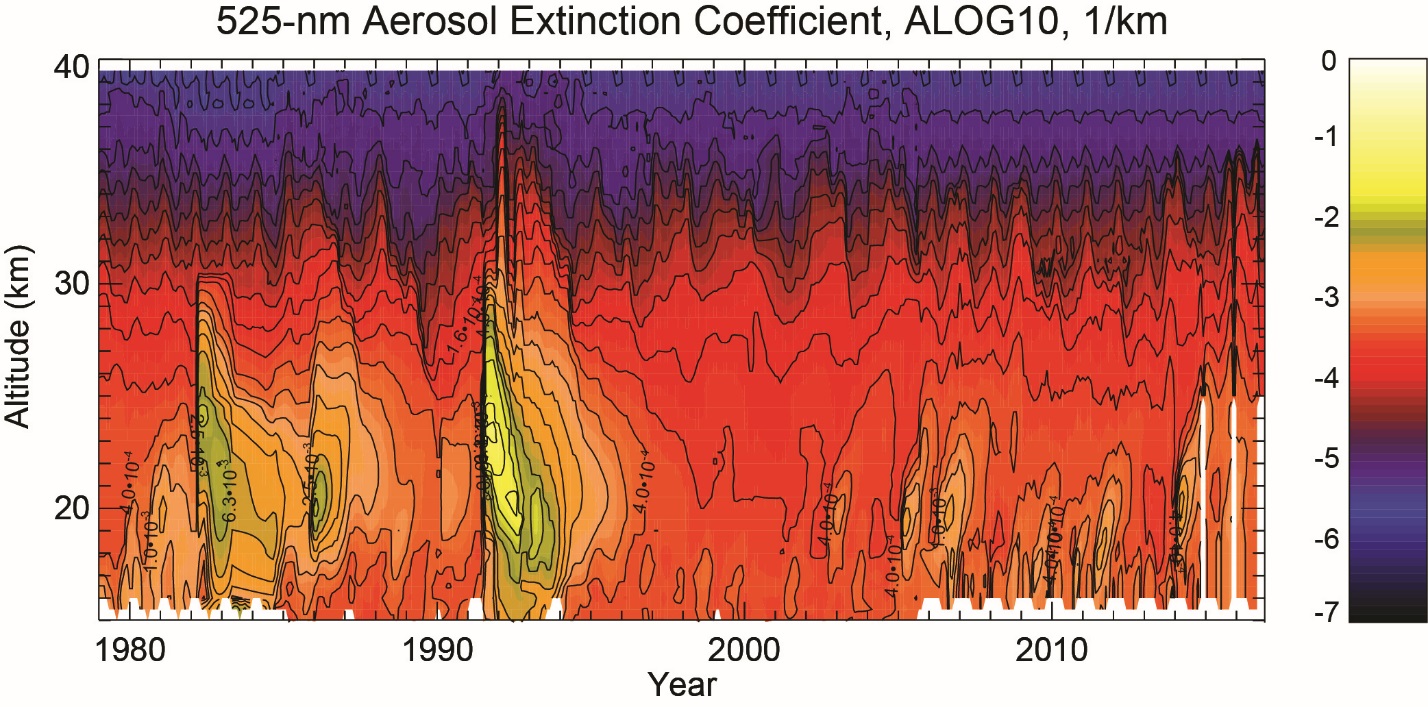
SSiRC has played a key role in the development of the Global Space-based Stratospheric Aerosol Climatology, or GloSSAC. GloSSAC is a 38-year record of stratospheric aerosol optical properties measured primarily by space-based instruments. It was developed as a part of the stratospheric aerosol forcing for the Climate Model Intercomparison Project (CMIP6) set (1979 to 2014) and subsequently extended through 2016. GloSSAC focuses on the Stratospheric Aerosol and Gas Experiment (SAGE) series of instruments through mid-2005 and on the Optical Spectrograph and InfraRed Imager System (OSIRIS) and the Cloud-Aerosol Lidar and Infrared Pathfinder Satellite Observation (CALIPSO) data thereafter. We also utilize data from other space instruments and from ground-based, air and balloon borne instruments to fill in key gaps in the data set. The end result is a global and gap-free data set focused on aerosol extinction coefficient at 525 and 1020 nm and other parameters on an 'as available' basis. We developed a new method for filling the post-Pinatubo eruption data gap for 1991 to 1993 based on data from the Cryogenic Limb Array Etalon Spectrometer (CLAES). In addition, we developed a new method for populating high wintertime latitudes during the SAGE period employing a latitude-equivalent latitude conversion process that greatly improves the depiction of aerosol at high latitudes compared to earlier similar efforts. We report data in the troposphere only when and where it is available. This is primarily during the SAGE II period except during the most enhanced part of the Pinatubo period. It is likely that the upper troposphere during Pinatubo was greatly enhanced over non-volcanic periods and that domain remains substantially under characterized. We note that aerosol levels during the OSIRIS/CALIPSO period in the lower stratosphere at mid and high latitudes is routinely higher than what we observed during the SAGE II period. While this period had nearly continuous low-level volcanic activity, it is possible that the enhancement in part reflects deficiencies in the data set. We also expended substantial effort to quality assess the data set and the product is by far the best we have produced.
Thomason, L. W., N. Ernest, L. Millán, L. Rieger, A. Bourassa, J.-P. Vernier, G. Manney, T. Peter, B. Luo, and F. Arfeuille (2017), A global, space-based stratospheric aerosol climatology: 1979 to 2016, submitted to Earth System Science Data July 2017.